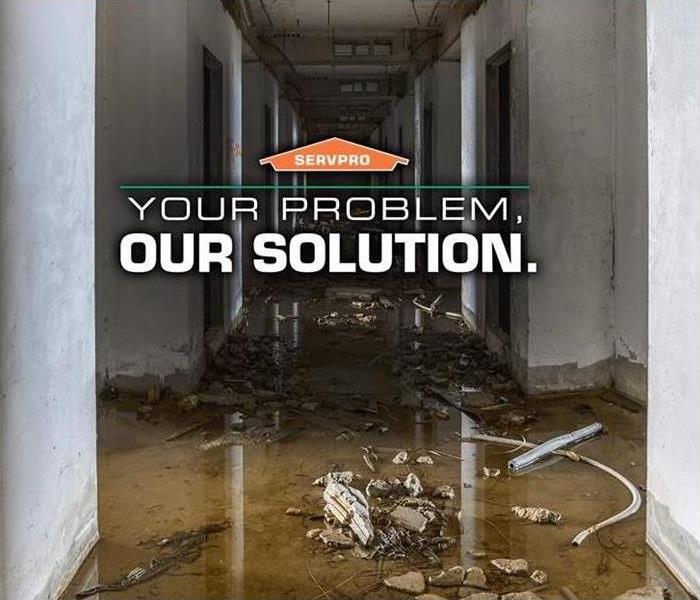What is Water Restoration?
6/14/2017 (Permalink)
 Don't let a water damage be your problem! SERVPRO of DeSoto, Tate, & Tunica Counties is here to help! 662-349-6500.
Don't let a water damage be your problem! SERVPRO of DeSoto, Tate, & Tunica Counties is here to help! 662-349-6500.
The following is provided by the IICRC.
Companies that perform water damage restoration have to be skilled in a number of areas to stay current in their field. Technicians in the industry have to combat a number of threats, some visible and some invisible, before their job is done. Structural weakening, chemical runoff, electrical hazards, dangerous wildlife, and deadly microbes are all common risks technicians have to contend with. Without the proper education and equipment, a technician risks grave injury and may leave health risks behind for a family to encounter. Fortunately, technicians in the industry have access to the educational resources offered by the Institute of Inspection, Cleaning and Restoration Certification, or IICRC.
After getting certified in water damage restoration and a number of related fields, a professional in the field will be able to identify and neutralize any problems they are likely to face at a job site. In most cases, a technician is called to a home following a flood or plumbing disaster. In either case, the initial threat a technician has to encounter is hazardous standing liquid. Floods and sewage backups are normally host to dangerous chemicals, like oil runoff, bacteria and viruses. Before any repairs can be done on the home, a technician will need to be outfitted with the proper safety wear and begin investigating where the liquid is pooling. Moisture meters can detect the level of moisture in and behind drywall, carpet, and other areas. Using minimally-invasive tools, a technician can quickly find pockets of heavy moisture in areas not readily accessible.
This is important because only thorough drying will ensure that further destruction does not occur. Most companies use a combination of industrial air movers and dehumidifiers to extract moisture from both materials and the air. This process can take some time, but diagnostic tools like moisture meters help technicians monitor the drying process. Once all of the materials inside the home have reached safe levels, mold and other microbial growth can be halted.
The most severe threats a water damage restoration company has to deal with are molds and other pathogens. These contaminants can remain a major hazard for years after they have taken root, and can cause insidious health problems while remaining hidden in vents or behind walls. Trained technicians are capable of neutralizing molds and other pathogens by utilizing special cleaning products and quickly removing compromised materials. Being able to identify mold growth is an important skill for a professional, and stemming the growth of a colony can be the difference between saving a home and having to condemn it. Certified firms are capable of quickly working through a property and disposing of anything that is beyond repair. Anything that is salvageable but soaked is separated, cleaned properly, and promptly dried. If the building’s structural integrity has been affected, these technicians can identify it and alert the homeowner and the insurance representative to its presence.
Without professional help, a homeowner will never know for sure that their home is safe to live in again. This is why the help of a certified technician is so valuable. They don’t just repair homes, they restore normalcy.
Though IICRC does not in fact operate its own school, it does recommend the best water damage restoration technician training courses per industry standards.
Time is of the essence after a major water disaster. Though Journeyman-certified technicians may be the right choice for water damage that does not threaten structural integrity, it is vital to bring an IICRC certified Master professional to the scene of a major disaster as soon as possible. Certified professionals use the skills they’ve learned in the accreditation courses to examine the structure, textiles, and the belongings, and will likely be able to control the damage, so no further damage will occur.
Furthermore, knowing the fastest and best means of drying the structure and textiles is imperative. Familiarity with the most effective processes and safest compounds to stop the spread of molds and microbes is also needed to protect people and animals in the environment. Graduates of the relevant IICRC-approved classes excel in these areas.
The importance of providing customer satisfaction cannot be over-emphasized. Each certified technician must pass a stringent series of exams prior to acceptance, and continual training is required. Complaints are taken seriously and must be handled promptly to ensure continued accreditation as a certified firm.
Water damage restoration technician training is a surefire way to insure the latest and greatest procedures are used to protect a customer’s property. There are various courses of study and ways to learn the information, so IICRC works with both the consumer and the professional to guarantee the best experience.

 24/7 Emergency Service
24/7 Emergency Service